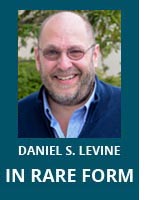
When John Anastasiadis and his wife Panayiota were getting ready attend a birthday party for a friend’s child, Dimitri, they didn’t have a birthday card and Panayiota asked John to make one, as she often did.
Anastasiadis is an industrial designer by training, and often makes birthday cards on such occasions. He attributes that to poor planning that requires a last-minute burst of creativity. Dimitri, who has cerebral palsy, is a fan of the comic book character the Hulk, so Anastasiadis reimagined Dimitri as the Hulk right down to his leg braces.
The couple would later learn that Dimitri was so taken with the drawing that he had it framed and hung it on his bedroom wall. That got Anastasiadis to thinking. “There’s something there that we can tap into. There are kids who have these disabilities and then there’s also the siblings and the family members,” he said. “We thought, why don’t we draw these kids as superheroes?”
The couple’s daughter Kyriaki was diagnosed before her fourth birthday with the rare and progressive nervous system disorder beta-propeller protein-associated neurodegeneration or BPAN. BPAN is part of a group of conditions known as NBIA disorders, an acronym for neurodegeneration with brain iron accumulation. Though Kyki, as she is known, had been initially misdiagnosed as having autism, her mother thought doctors got it wrong and kept pushing to find answers. When she brought her to a neurologist at New York University, the doctor quickly dismissed that diagnosis and with genetic testing determined Kyki had BPAN.
When she was diagnosed in 2016, doctors did not know much about the condition, although the couple soon found researchers at Oregon Health Sciences University researching the disorder and the NBIA Disorders Association, which was funding research.
Children with BPAN exhibit global developmental delays, although there is a spectrum to the severity of the condition. Kyki is able to walk and talk slightly, but mostly communicates with an augmentative device. Some children with BPAN never walk or talk.
“At one point, Kyki will regress and she’ll lose all of her abilities that we have worked very hard for her to gain,” said her mother Panayiota Anastasiadis. “There is no treatment to stop the progression as of yet. She’ll stop walking, stop talking, stop eating. It gets pretty ugly. There’s dystonia and dementia that sets in. It’s a tough pill to swallow.”
Though the family had participated in fundraising efforts, the response to the Hulk birthday card sparked an idea. John thought he’d design a movie poster of rare disease children as superheroes. But once he had the black and white outlines of the figures, he saw even greater potential in turning the poster into a page of a coloring book that kids could interact with and enjoy.
The couple is now selling the Rare Adventure Coloring Book online to raise money for the NBIA Disorders Association and have already raised about $10,000 through their efforts. While children of all different conditions are pictured, among the people who are depicted in the coloring book is Kyki. She likes to dance and she is pictured as a super ballerina. BPAN researchers at Oregon Health Sciences University also show up in the book as one page features Susan Hayflick, Penny Hogarth, and Allison Gregory, who are conducting a natural history study. And NBIA Disorders Association founder Patty Wood is depicted surrounded by butterflies. The NBIA at its bi-annual conference releases butterflies in memory of children who have been lost to NBIA disorders like BPAN.
The coloring book is not the first to reimagine rare disease children as having superpowers. There have been a number of past efforts around specific conditions. Novartis did a comic book around kids with PIK3CA. Trinity Jagdeo created a series of comic books to honor her friend with spinal muscular atrophy that features superheroes with disabilities, and BioMarin published a graphic novel from Jonathan Hill who has hemophilia A. Of course, Marvel is perhaps the original innovator of the rare disease superheroes with the X-Men, a group of characters whose powers are derived from genetic mutations.
Asked about why superheroes emerge as a recurring theme within the rare disease community, Anastasiadis said he attributes it to a need to stay positive.
“If you think of the negatives, it’s going to be pretty depressing. You have to try to lighten the mood a little bit and maybe give the kids some hope and maybe help the siblings understand it a little bit better and maybe not see it as a death sentence, but more as something positive,” he said. “It’s just convenient that a lot of superheroes are created through some sort of mutation, right? Like Spider-Man gets bitten by the radioactive spider and is a mutation at the cellular level. I think it’s a nice narrative. It’s something that people can relate to.”
I don’t see a need for imagining super powers for people with rare diseases. For me it’s not a matter of being faster than a speeding bullet or being able to leap tall buildings in a single bound. The true superpower I’ve come to see over and over again among people in the rare disease community is resilience. It the ability to get out of bed each morning, deal with whatever the new day throws at them, and fight for answers and treatments. That, I’ve come to see, is a superpower.

Stay Connected
Sign up for updates straight to your inbox.
